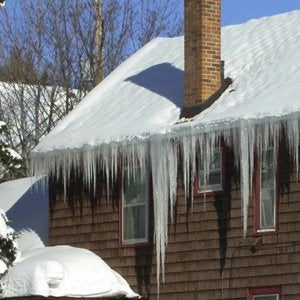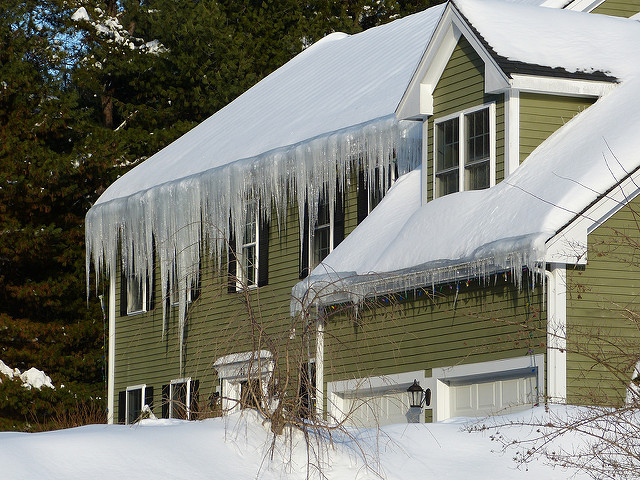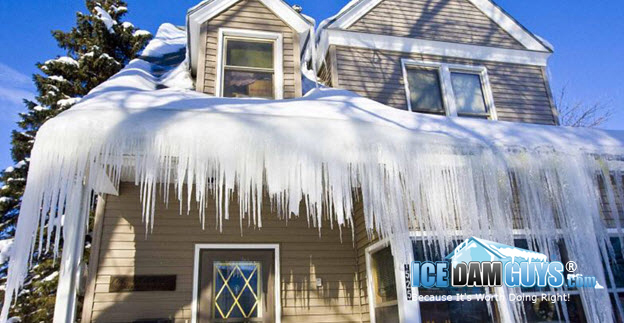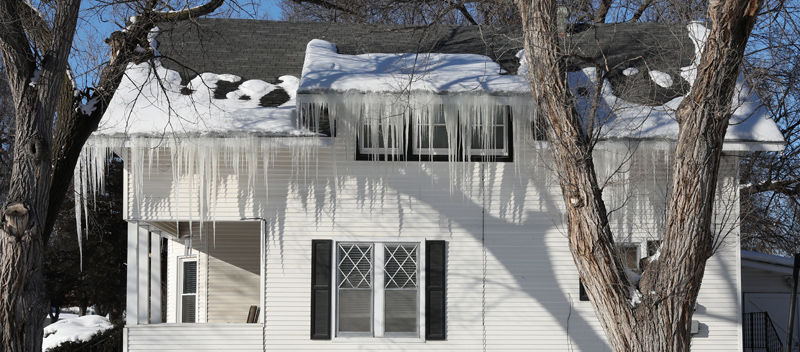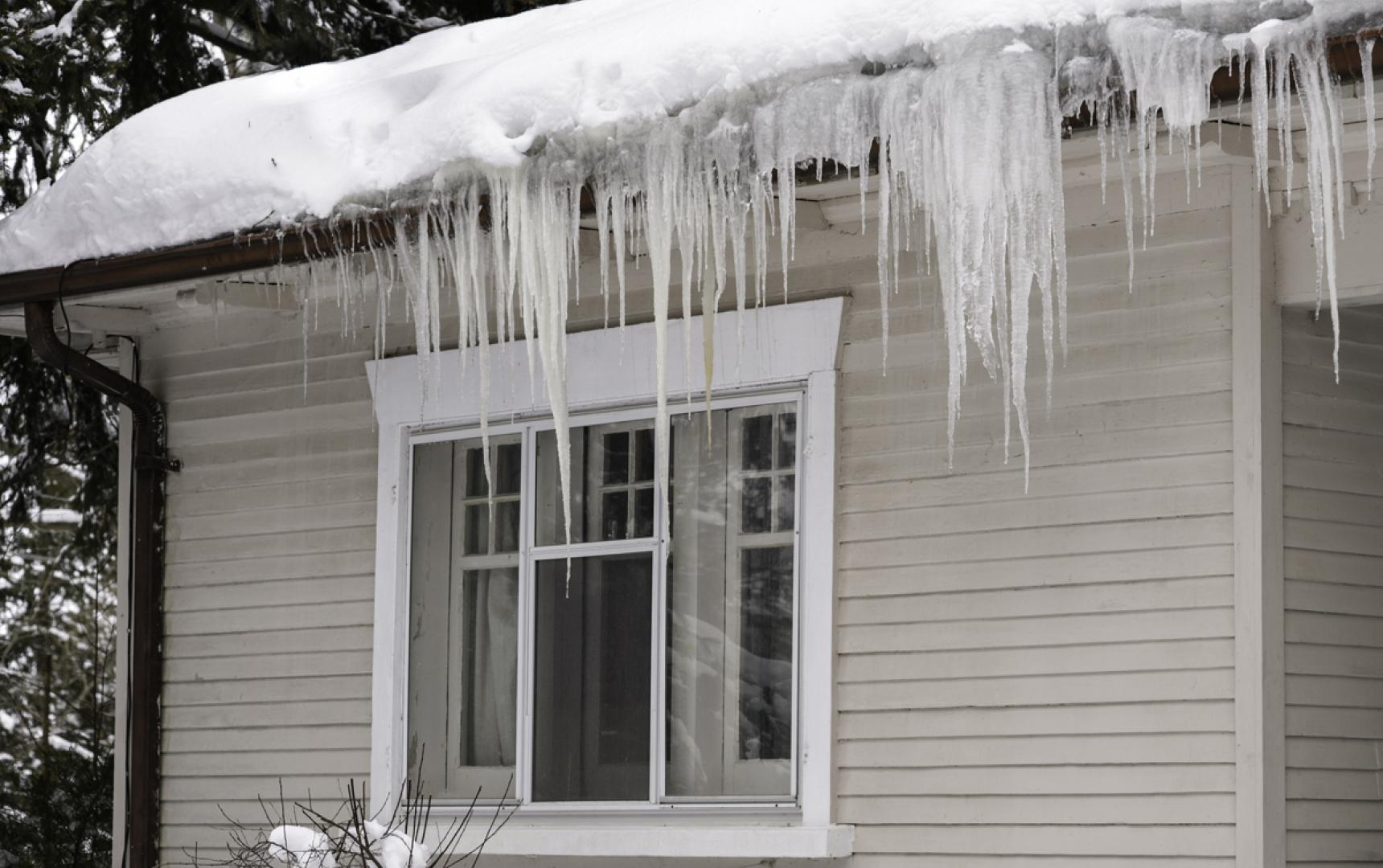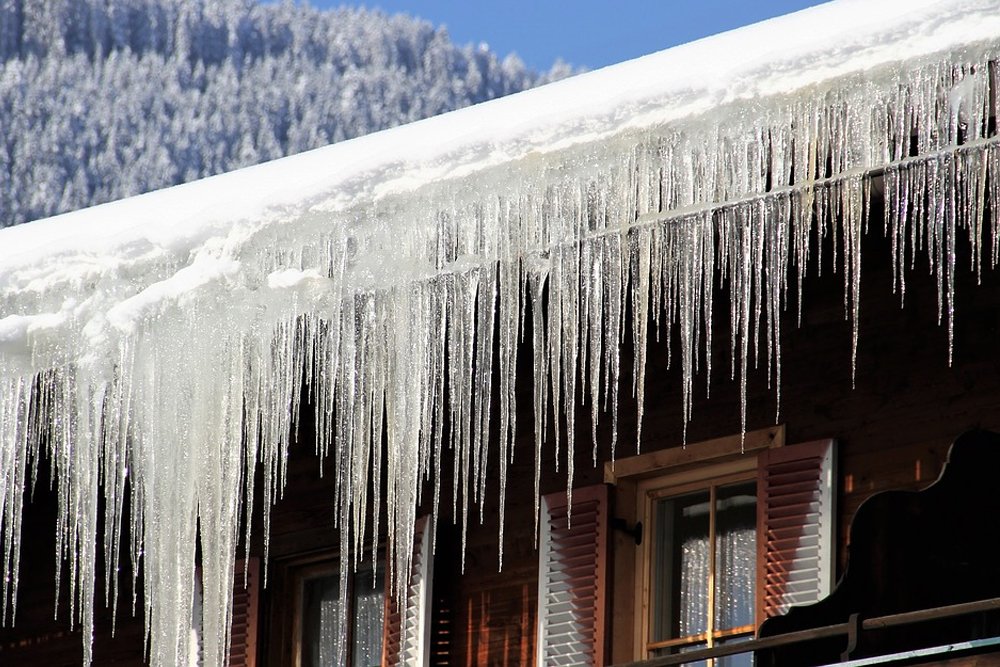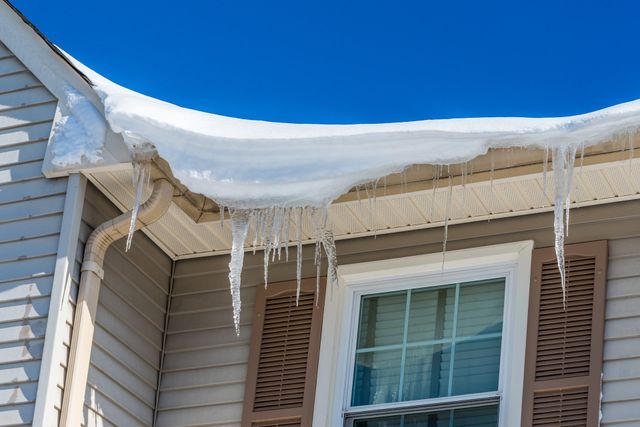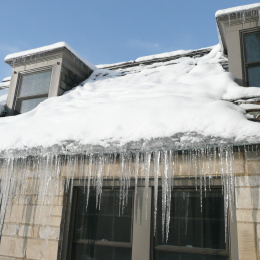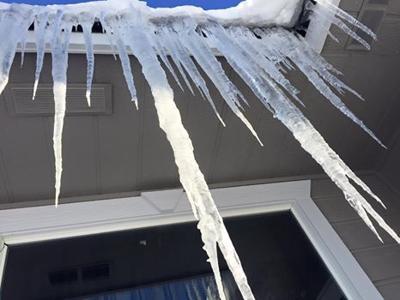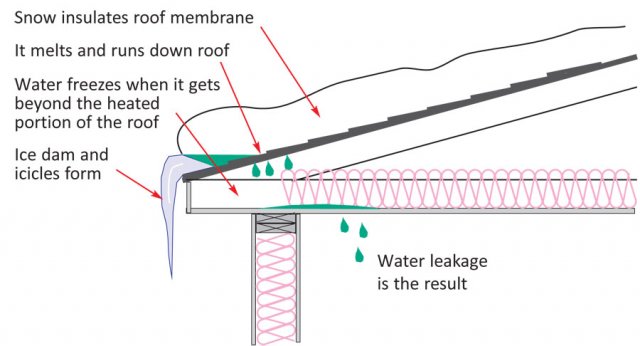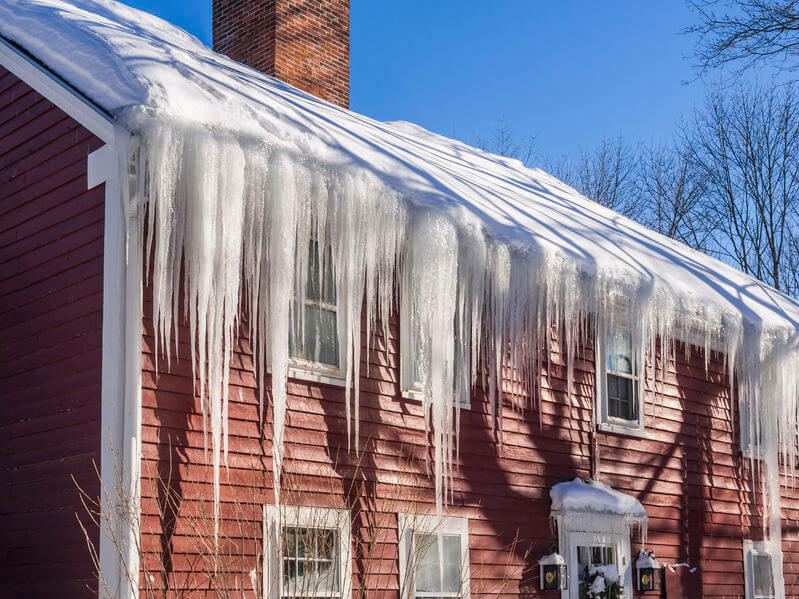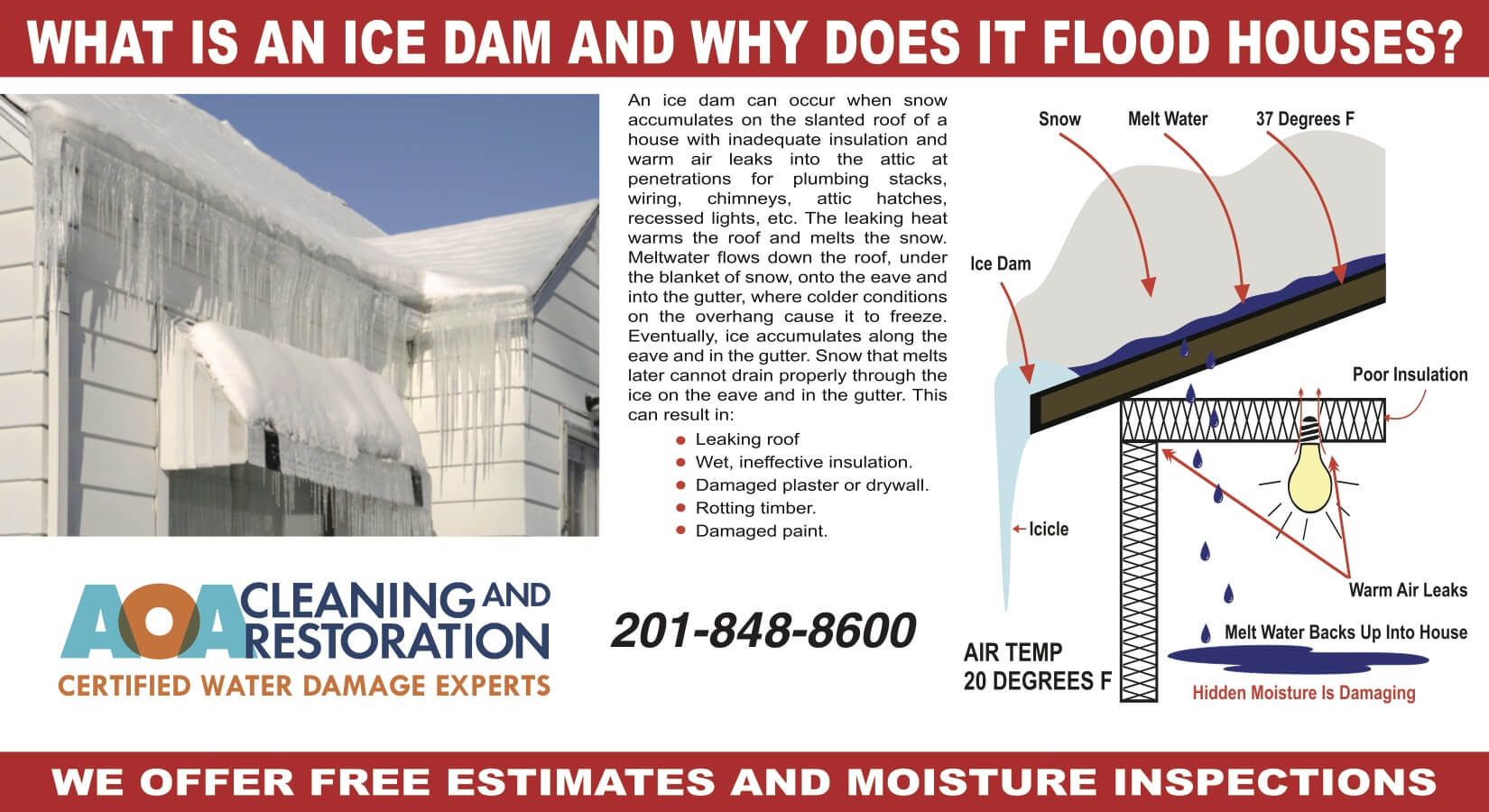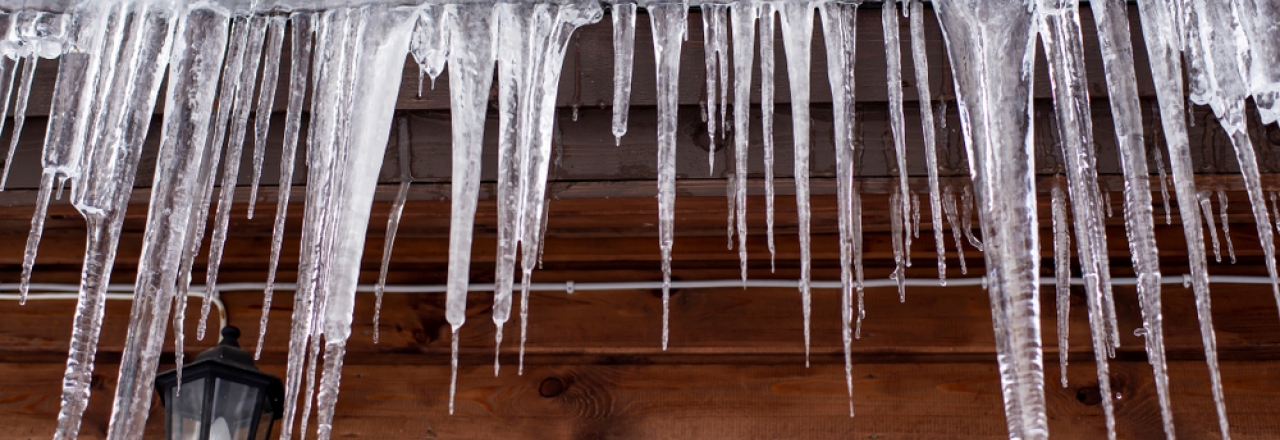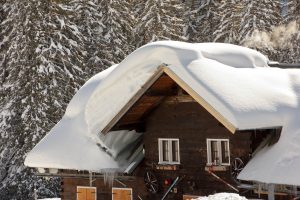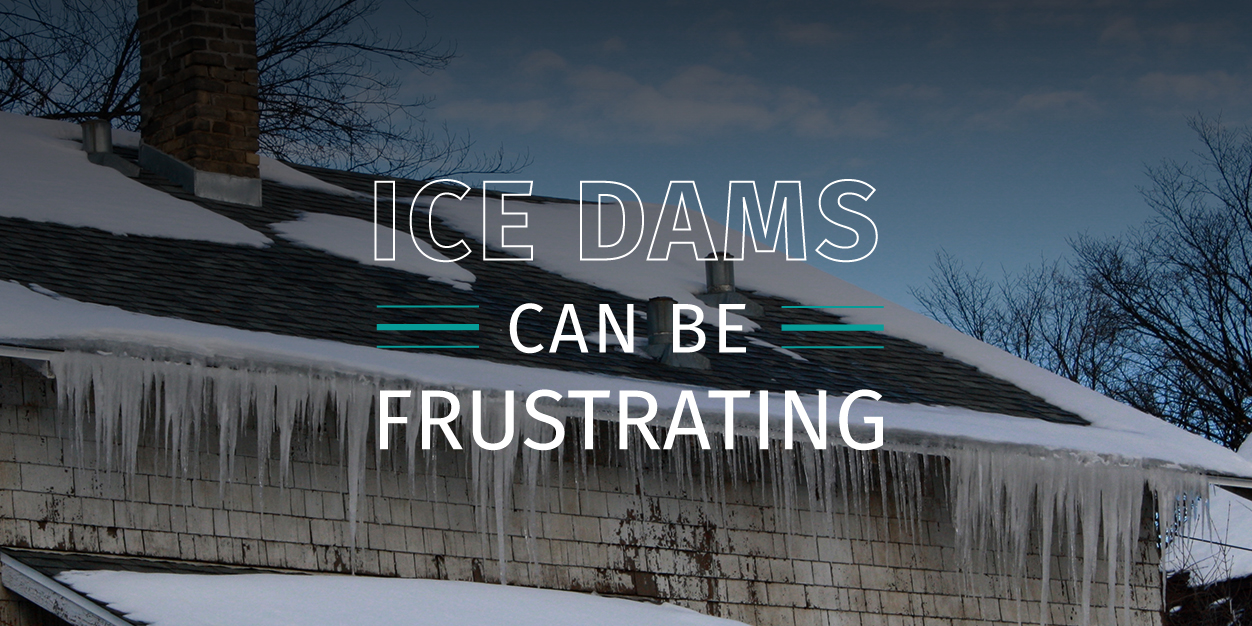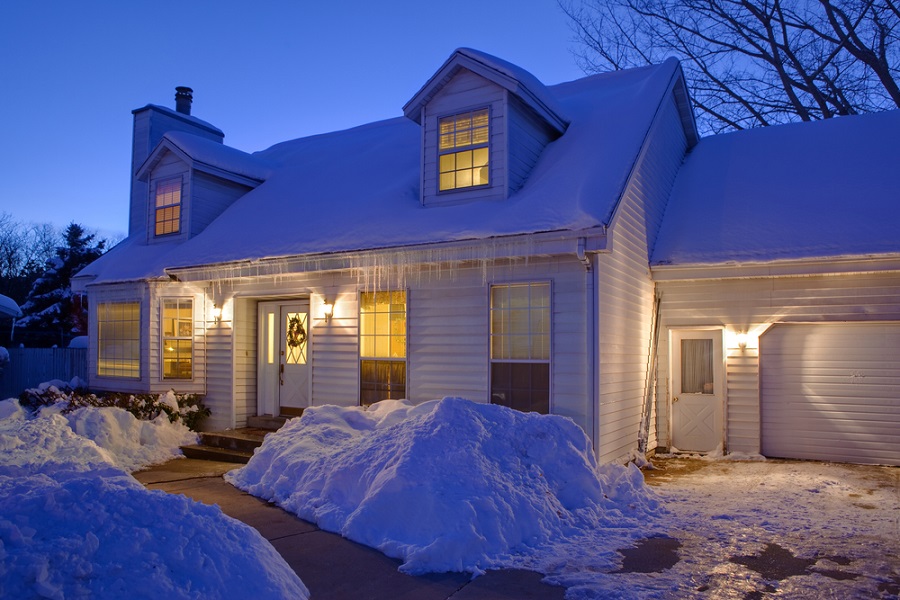Water stained ceilings dislodged roof shingles sagging gutters peeling paint and damaged plaster all are the familiar results of ice dams.
Why do icicles form on my houses roof.
Ice dams form when warm air from inside your home melts snow on the roof.
That s because the same conditions that allow icicles to form snow covered roofs and freezing weather also lead to ice dams.
Thick bands of ice form along the eaves of houses causing millions of dollars of structural damage every year.
Dams can tear off gutters loosen shingles and cause water to back up and pour into your house.
Anyone who has lived in a snowy climate has seen ice dams.
That s because the same conditions that allow icicles to form snow covered roofs and freezing weather also lead to ice dams.
Icicles form on gutters when excess water is not allowed to flow freely through the gutters.
Small icicles are a normal part of life as a homeowner in west michigan so you don t necessarily need to be worried but you do need to pay attention and make sure no larger problems may be present.
So icicles hanging from a roof s edge may be a sign of an ice dam.
However when the roof edge is below freezing the melting snow will refreeze and create icicles.
Ice dams are formed when the snow melts and runs down the roof and refreezes on the coldest part of your roof.
In the winter the heat inside your house will often keep the roof warm causing snow that has gathered there to melt.
Icicles are formed when rooftop snow melts then refreezes as it attempts to flow off the roof.
Thick ridges of solid ice that build up along the eaves.
When the meltwater reaches the colder eaves the part of the roof that extends beyond the walls the water refreezes and creates a buildup of ice along the edge of your roofline says this old house.
Icicles form simply because water running off a roof in above zero weather will start to freeze as the temperature drops below zero most often on mild sunny days followed by cold nights.
Icicleswill usually form when roof snow slowly melts and flows down the roof refreezing at the edge of the roof.
Clearly this will only occur when the roof surface warms above freezing it will be warm enough to melt snow.
In this manner icicles get longer and thicker over time unless the temperature stays consistently warm or consistently cold for a long period.
As the snow melts water flows into a cold gutter gathering there and spilling over the sides forming icicles.
Thick ridges of solid ice that build up along the eaves.
This scenario is often the result of a warm attic.
The presence of icicles can mean that heat is escaping from your home or business or that you have been through a freeze and thaw cycle.


